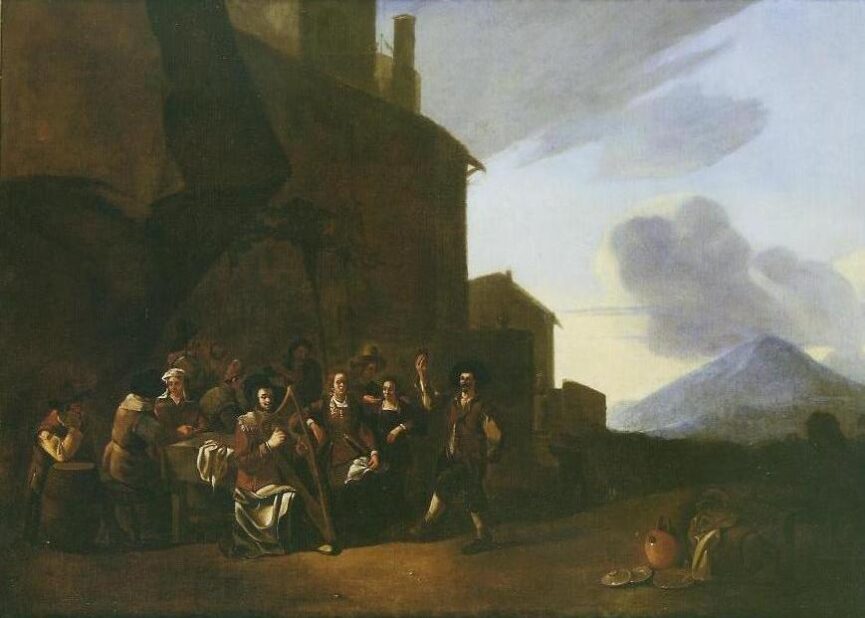JOHANNES LINBELBACH formerly known as the MAESTRO DEI MESTIERI, or THE MASTER OF THE SMALL TRADES (Frankfurt 1622 – Amsterdam 1674)
Figures carousing, playing the harp and dancing outside a Neapolitan tavern, Vesuvius in the distance
Oil on canvas: 34 x 40 in. 86.4 x 101.6 cm.
In a letter dated 31 December 2007, Dr.Marijke C.de Kinkelder from The Netherlands Art History Bureau in The Hague has written of this picture: ‘The painting of a Tavern Scene near Naples with Vesuvius in the background is indeed very close to either Pieter van Laer or Jan Miel. Judging from the photograph it reminds me of the Maestro dei Mestieri (Master of the Small Trades). This artist has been identified by Thomas Kren as the young Johannes Lingelbach (see: Thomas Kren, ‘Jan Lingelbach in Rom’ in The J.Paul Getty Museum Journal 10 (1982), p.45-62).’
Thomas Kren discusses Lingelbach’s early career in Rome between 1644 or 1647 and 1650, when he returned to Amsterdam to become one of the most celebrated Dutch genre painters. He builds a case for about sixteen previously mis-attributed paintings grouped around Jan Miel or the artist known as the ‘Master of the Small Trades’ being by the young Lingelbach. The defining work in this group is Il Ciambellaro (Galleria Nationale d’Arte Antica, Rome), which he claims demonstrates “the simplified forms and flat lighting that contrast with the accurate naturalistic detail and extraordinary sensitivity to the effects of light, atmosphere and space evident in landscapes by van Laer.”
Among the influences on Lingelbach, according to Kren, were the mature work of Jan Miel from the late 1630’s and 1640’s, and the classicizing influence of Michael Sweerts, who arrived in Rome in 1646. Another seminal work of Lingelbach’s early career is The Purgative Source, (Musee Fabre, Montpelier), where Kren states that “the distant…mountains at the right are treated with even colouring and flat light.” This treatment is certainly evident in the landscape of the present picture, which also features the wide-brimmed hats of the peasants enlivening the surface design…and the doll-like male figures mentioned by Kren.

